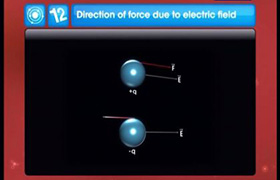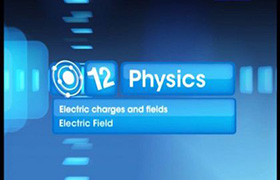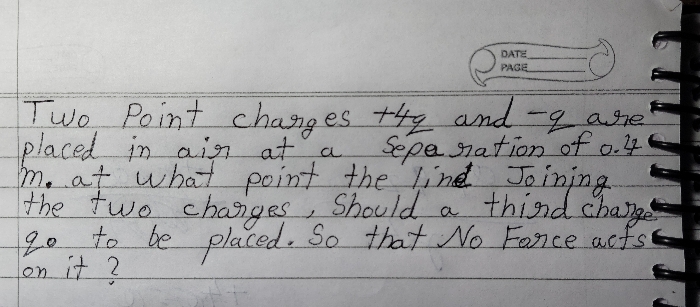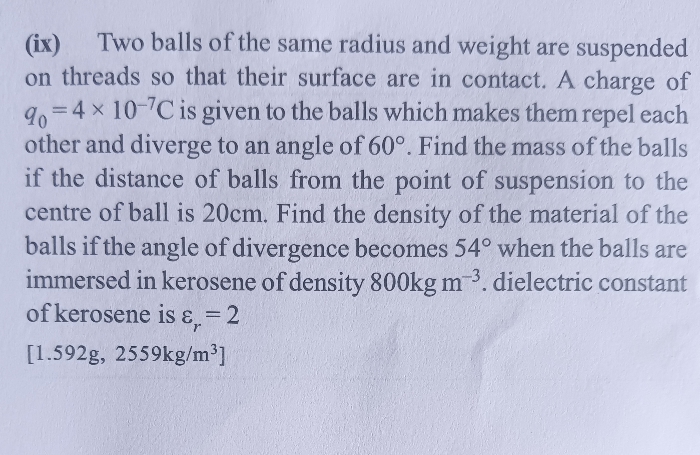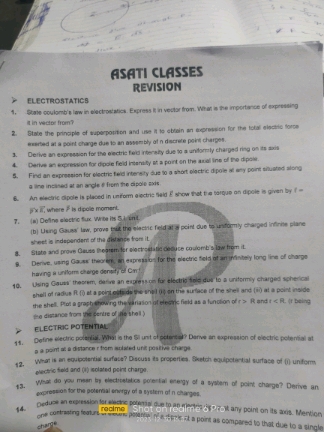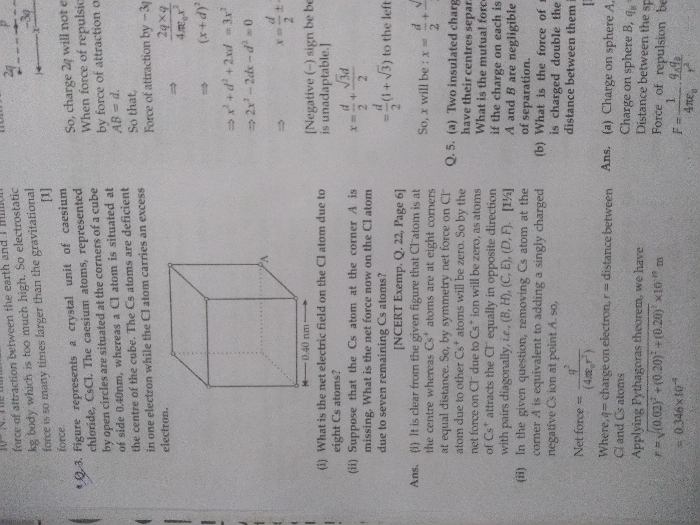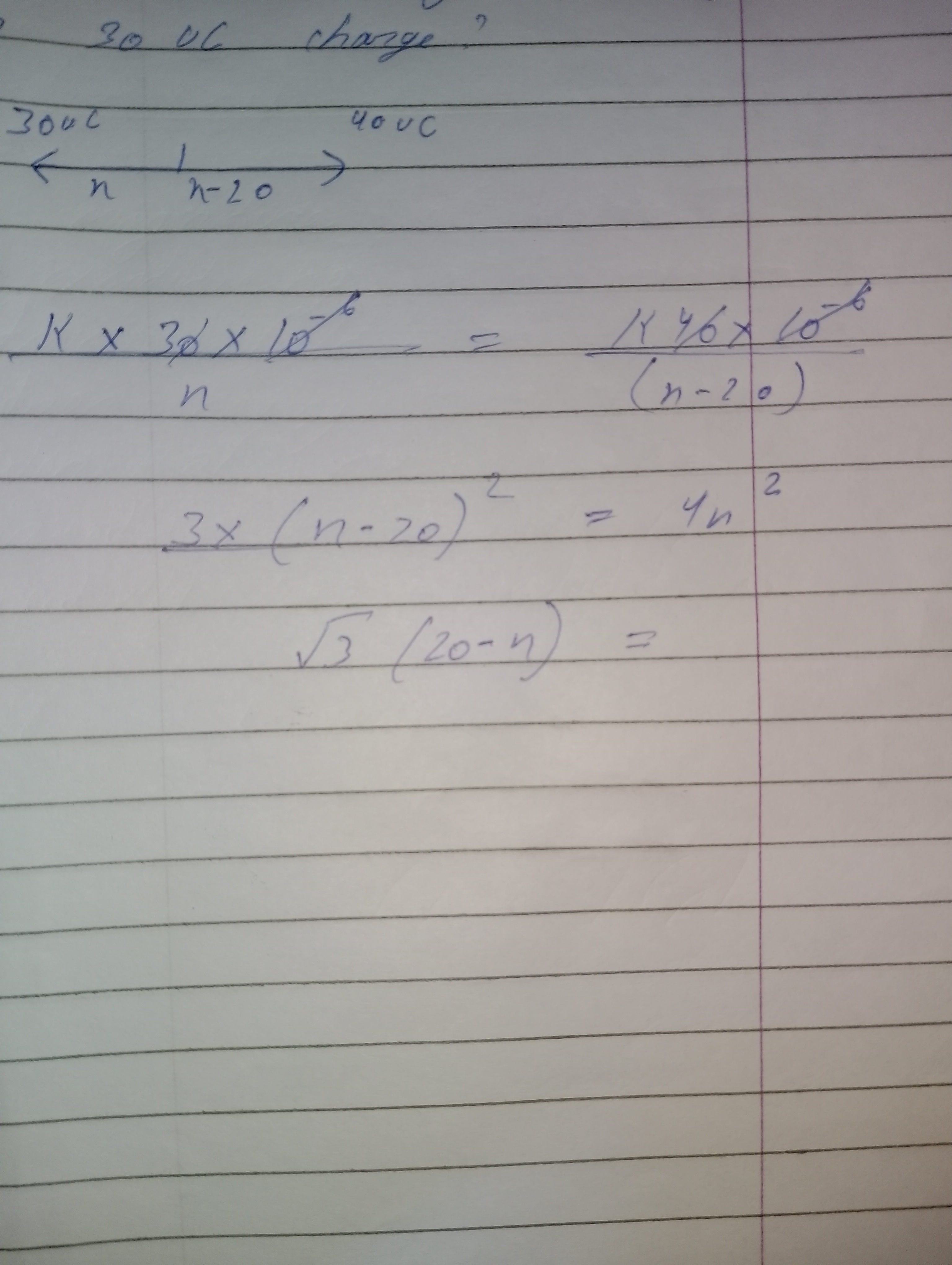CBSE Class 12-science Answered
An oil drop of mass 3.25*10^(-15) kg falls vertically with uniform velocity , through the air between vertical parallel plates which are 2 m apart. When a p.d. of 1000 V is applied to the plates the drop moves to the positively charged plate , being inclined at 45 degrees to the vertical. Calculate the charge on the drop.
Asked by arjunsah797 | 15 Mar, 2022, 09:58: AM
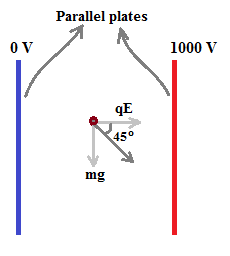
Charged oil drop moves towards plate that is at +ve potential 1000 V , when it is subjected to force mg due to gravity and electrical force qE .
where m is mass of oil drop, g is acceleration due to gravity , q is magnitude of charge on oil drop and E is electric field intensity
If the direction of movement of oil drop makes 45o with vertical , then magnitudes of these two forces are equal .
qE = m g
magnitude of charge q = ( m g ) / E
Electric field intensity E = 1000 V / 2 m = 500 V/m
magnitude of charge q = ( 3.25 × 10-15 × 9.8 ) / 500 = 6.37 × 10-17 C
Since the charge is attracted towards +ve potential plate , sign of charge is negative
Hence , charge on oil drop = - 6.37 × 10-17 C
Answered by Thiyagarajan K | 15 Mar, 2022, 14:35: PM
Concept Videos
CBSE 12-science - Physics
Asked by adityagalar2007 | 06 Apr, 2024, 13:06: PM
CBSE 12-science - Physics
Asked by amlanmcob | 06 Apr, 2024, 12:27: PM
CBSE 12-science - Physics
Asked by manishamunda787 | 02 Apr, 2024, 11:07: AM
CBSE 12-science - Physics
Asked by kalsichaitanya | 30 Dec, 2023, 16:08: PM
CBSE 12-science - Physics
Asked by glorialyanzaw | 13 Oct, 2023, 17:53: PM
CBSE 12-science - Physics
Asked by srishtijha944 | 15 Jul, 2022, 21:55: PM
CBSE 12-science - Physics
Asked by marshelojigas | 28 Jun, 2022, 06:46: AM
CBSE 12-science - Physics
Asked by arjunsah797 | 01 Apr, 2022, 07:31: AM

